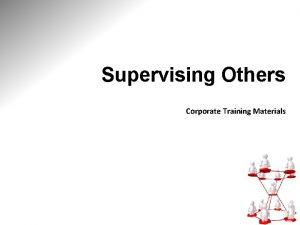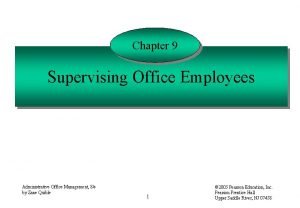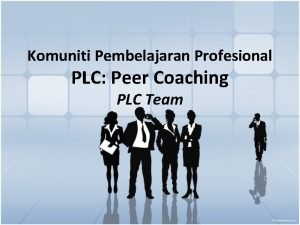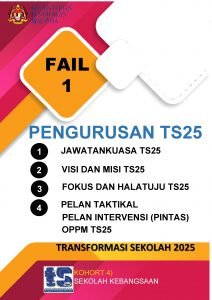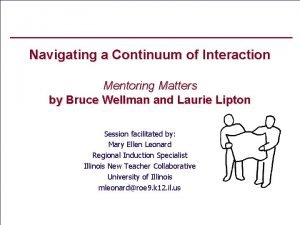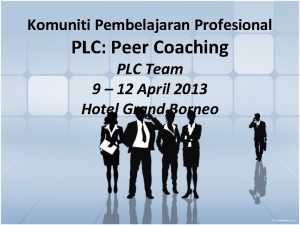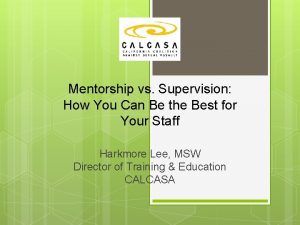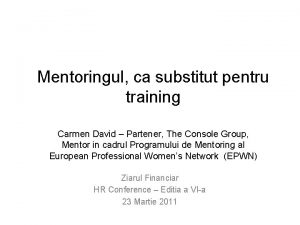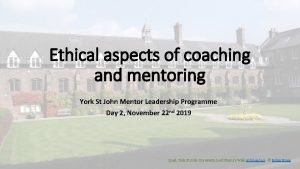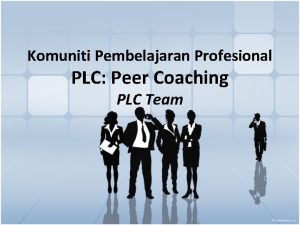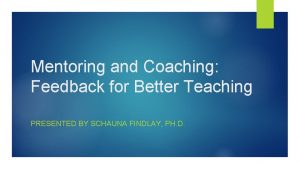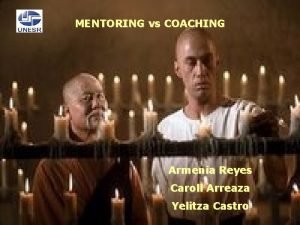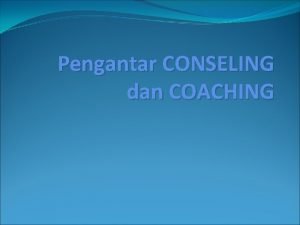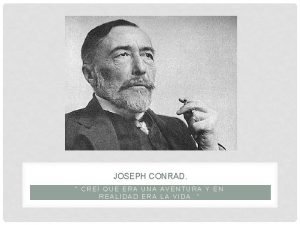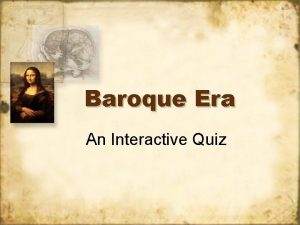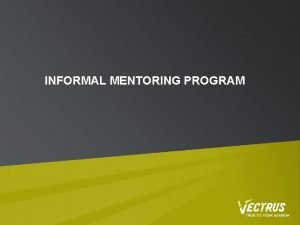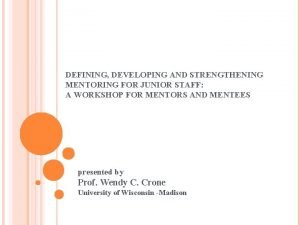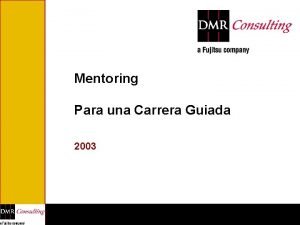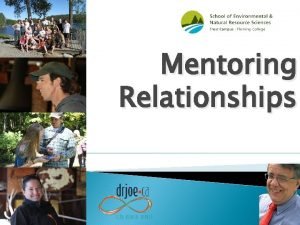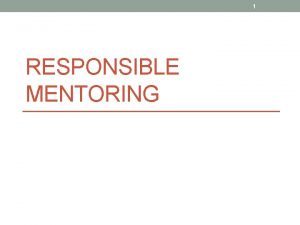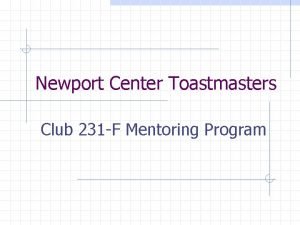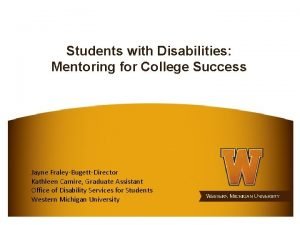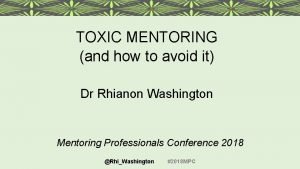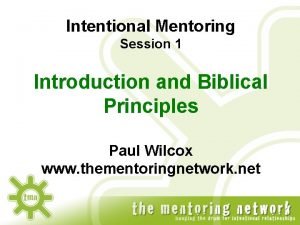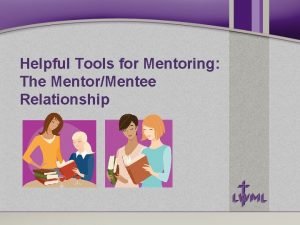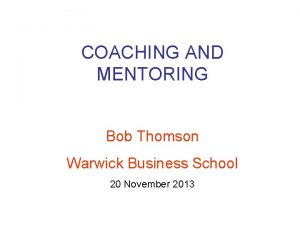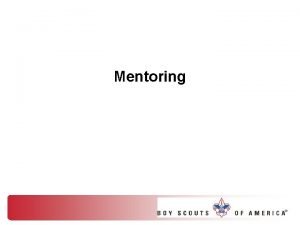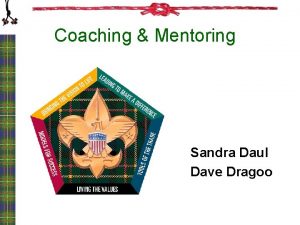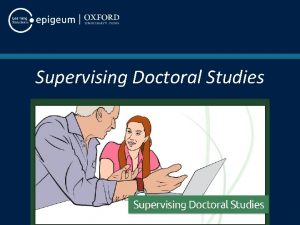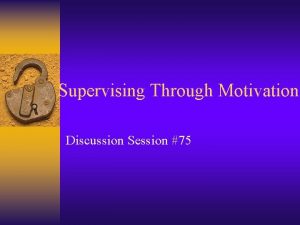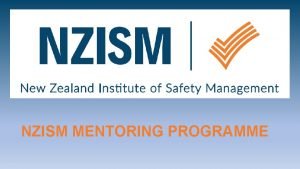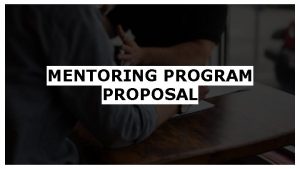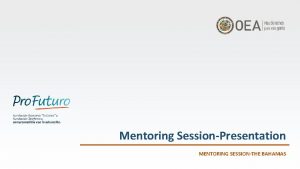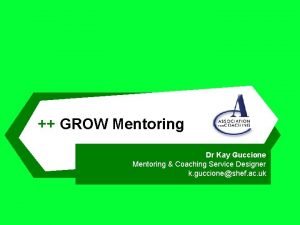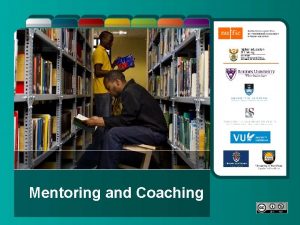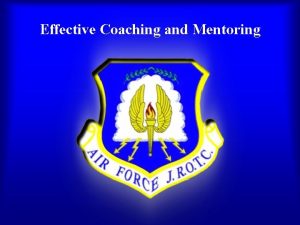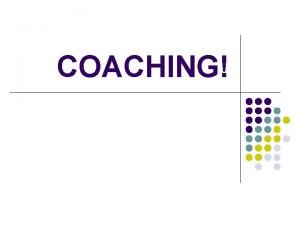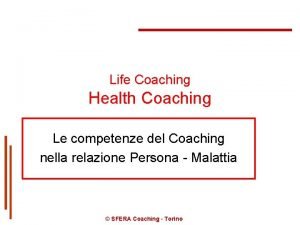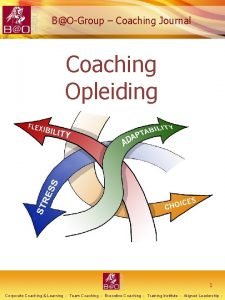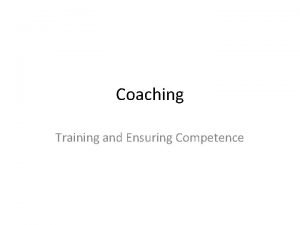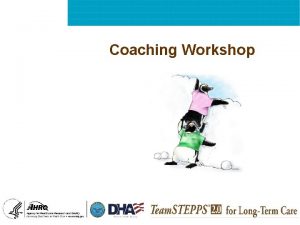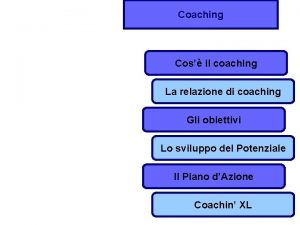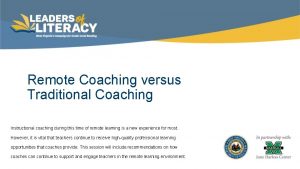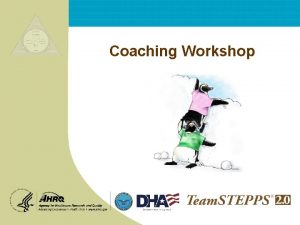Supervising Mentoring Coaching in an Era of Team


































- Slides: 34

Supervising, Mentoring, Coaching in an Era of Team Science L. Michelle Bennett, Ph. D Deputy Scientific Director, NHLBI, NIH Howard Gadlin, Ph. D Ombudsman, OD, NIH University of Iowa January 2013

Outline • • Mentors Mentoring Telling, Advising, Coaching How does Team Science factor in?

There is No Formula for the Perfect Mentor

We Wear Many Different Hats • • Investigator Clinician Core Director Supervisor Mentor Coach …. • • • Team Lead Division Head Branch Chief Department Director Project Sponsor ….

We Have Different Strengths • • Research Analysis Design Interpretation Future directions Teaching Vulnerability … • • Delegating Influencing Persuading Collaborating Working independently Sharing Humility …

Mentees Want Different Things • • Help Guidance Insights To be challenged To learn the secrets Brainstorming partner Oral presentation skills … • Introductions to others • Someone to help identify opportunities to present • Grant writing skills • Collaboration skills • To be directed • …

Mentoring is an important component of what we do Supervisors may not be the best primary mentor Multiple mentors may be very valuable: • • • – – • One-on-one Committees Is a two-way street 7

Defining a Mentoring Relationship • • • Formal vs Informal Goal vs Topic/Task Driven Frequent vs Infrequent Meetings Degree/Level of Guidance Accountability (both sides) • What does the Mentee want out of it? • The Mentor?

Situational “Mentorship” Kenneth Blanchard and Paul Hersey’s situational leadership model tells us that managers could use different leadership styles depending on the situation.

A Great Match is Important • Questions for Mentors • Questions for Mentees

Questions for Mentors • How do you mentor best? • What kind of mentoring arrangement do you prefer? • For what kind of person are you a good mentor? A poor mentor? • The next time you consider mentoring someone, would you be willing to sit down first to explore whether you are a good match? • What kind of conversation would you have to determine if the relationship would be a good fit? 11

Questions for Mentees • What do you want out of a mentoring relationship? • What goals have you set for yourself? – Long term? Short term? Where do you want to focus now? • How do you learn best? • How do you like to be challenged? • How frequently do you want to meet? – What happens if one of us needs to cancel? If one of us does not show up for an appointment? • Etc…?

A Great Match is Important • What qualities in a mentee will bring out the best qualities in you as a mentor? • What 4 characteristics define you best in the role of mentor?

There Can Be Challenges Mentees can…. • Consume you • Be unfocused and not follow-through • Be manipulative • Be unwilling to commit to the relationship Mentors can…. • Burn out • Run into situations where issues really need professional help • Forget boundaries • Find themselves in odd situations (eg ethics, favors)

Mentoring Plan • Consider having your Mentee develop a mentoring plan based on your questions and the discussion about how you will work together • Plan can include: – Setting professional goals – How they will achieve the goals – Role of the mentor in their career development – What they expect from mentor – what mentor can expect of them

Schedule Meetings When You Can Listen Actively • Pay Attention – Look at the person you are talking to and wipe all other thoughts out of your mind • Show That You're Listening – Nod, smile, ‘uh-huh’, etc… • Check-in to be sure you are understanding – Paraphrase, summarize what they’ve told you, ask clarifying questions • Do not Judge – Don’t interrupt before they finish their thought • Respond Appropriately – Be open and honest, demonstrate respect

Mentoring: The mentor can be a trusted friend, senior colleague, (usually a more experienced person). Some institutions create "mentoring programs" in which newcomers are paired with more experienced people in order to obtain good examples and advice as they advance. • Explain how the Department/Institution works • Assists with their Mentee's careers by: offering encouragement, sharing knowledge, providing growth experiences, etc. . • Encourages professional behavior by: setting high performance expectations performance, teaching by example, inspiring mentees • Gives wise counsel by offering advice or solutions to problems

Coaching: The “coach” helps the individual uncover existing strengths and abilities to develop strategies and action plans to achieve those goals. A coach helps hold mentee accountable to themselves through continued interactions and challenging them as needed. • Helps client discover their own path to their desired goal or objective (doesn’t “tell”) • Invites employee to come up with his/her own thoughts, ideas and strategies guided by powerful questions (i. e. What would happen if the barriers were not there? What does success look like? How do you see yourself tackling this issue? etc…) • Helps the employee develop clarity about what he/she wants to accomplish • Helps guide development of action plans

Mentor/Coach • It is entirely possible to be (or to have) a mentor/coach • This is a person who can successfully meld the two approaches and can provide one or the other depending on the needs and issues of the “mentee”

Choosing the Best Approach In what situations would your preferred approach be: • Telling someone how to handle the situation • Sharing experiences you have had in the past and advising several options for approaching a problem • Ask a series of questions that will help the individual self-discover the best solution to the issue

Mentoring in the Age of Team Science and Collaboration

Collaboration Introduces Threats High Interaction and Integration Group. Identity Multiple Interdependent Leaders Status Power Autonomy Self. Identity Independent Interdependent 22

Model of Team Development Adjourning and Transforming Forming Performing Storming Norming 23 Bruce Tuckman, 1965, 1977

Interviewing and Hiring Models • Values-based interviews – This interviewing approach is designed to learn about the values of the candidate and to determine if they match those of the “ideal candidate” • Performance-based interviews – This interviewing approach asks the question of whether the person being considered for the position can actually do the job for which s/he is being considered • Behavioral-based interviews – This approach focuses on understanding how an applicant would behave in very specific circumstances.

Interviewing and Hiring: Values-based questions • Describe three situations you liked best from your past position(s). What were the key ingredients that made those situations so agreeable? • What do you do when you make a mistake in your work? Describe your process for addressing such situations. • What steps do you take to stay current with scientific trends and advances?

Interviewing and Hiring: Performance-based questions • Describe a project that you led that had a tight deadline and its outcome. • One project of great importance to our team is…. . How would you approach it? • Describe a time when your experimental results did not match your expectations? What did you do? What steps did you take?

Interviewing and Hiring: Behavior-based questions • Describe a time when you faced a stressful situation and how you used your coping skills to emerge from it successfully. • Describe a time when you were required to follow a policy with which you did not agree. • Describe how you have recently dealt with a very upset customer or co-worker.

Practice • Think of one thing that would be really important for you to learn when considering whether to have someone join your team – what would you ask them to get that information? • Groups of four – – Ask the question to a couple people – Did you get the information you were after? – Share with the group what you hoped to learn – Any ideas for improving the question?

Participating Shouldn’t be Risky High Risk Low Grad Student Post-doc Tenure Track Career Status Early Career Tenured Established

Participating Shouldn’t be Risky High Risk Low Grad Student Post-doc Tenure Track Career Status Early Career Tenured Established

Participating Shouldn’t be Risky High Risk Low Grad Student Post-doc Tenure Track Career Status Early Career Tenured Established

We Propose Explicit Pre-Tenure Agreements or Language to Include in the Offer Letter • Include “Participating in or Leading an IR Project” in the Offer Letter – Roles, Responsibilities, Expectations – Review and Reward • Review criteria, sharing credit – Mentoring • For and by the scientist – Joint Appointments • What can everyone expect and how to make changes teamscience. nih. gov

Motivating Team Identity The Sweet Spot Essential Work Division Priorities and Objectives Passions Tasks that Engage the Mind and Spirit Strengths Competencies and Expertise • Where personal strengths and passions align with essential work in a setting which provides opportunities for challenge and growth. • Where individuals are the most valued and their contributions most valuable. Maximize the Value of each Individual: Aim to increase the overlap among these three circles, while keeping in mind the changing contents within each circle.

Thank-you!
 Corporate training materials
Corporate training materials Oklahoma board of nursing lpn scope of practice
Oklahoma board of nursing lpn scope of practice Supervising office employees
Supervising office employees Beza coaching dan mentoring
Beza coaching dan mentoring Laporan plc ts25
Laporan plc ts25 Coaching mentoring continuum
Coaching mentoring continuum Peers dalam bimbingan instruksional
Peers dalam bimbingan instruksional Mentoring vs coaching vs supervision
Mentoring vs coaching vs supervision Partener de training
Partener de training Ethics in coaching and mentoring
Ethics in coaching and mentoring Ipcrf meaning
Ipcrf meaning Matlamat bercirikan peers
Matlamat bercirikan peers Sample coaching and mentoring program for teachers
Sample coaching and mentoring program for teachers Similitudes y diferencias de mentor
Similitudes y diferencias de mentor Perbedaan coaching dan mentoring
Perbedaan coaching dan mentoring Creí que era una aventura y en realidad era la vida
Creí que era una aventura y en realidad era la vida Poema sobre as estrelas
Poema sobre as estrelas Era quiz: the baroque era
Era quiz: the baroque era Elizabethan era vs victorian era
Elizabethan era vs victorian era Team spirit becomes team infatuation
Team spirit becomes team infatuation The white team cheers for the blue team, just like
The white team cheers for the blue team, just like Team spirit becomes team infatuation
Team spirit becomes team infatuation Thank you letter mentor
Thank you letter mentor Junior staff mentoring
Junior staff mentoring Mentoring de carrera
Mentoring de carrera Cross-company mentoring
Cross-company mentoring Mentoring relationship definition
Mentoring relationship definition Hdn mentoring programme
Hdn mentoring programme Responsible mentoring meaning in research
Responsible mentoring meaning in research The mentoring club
The mentoring club Dss wmu
Dss wmu Toxic mentoring
Toxic mentoring Biblical mentoring principles
Biblical mentoring principles Prayer for mentors and mentees
Prayer for mentors and mentees Business coach warwick
Business coach warwick
